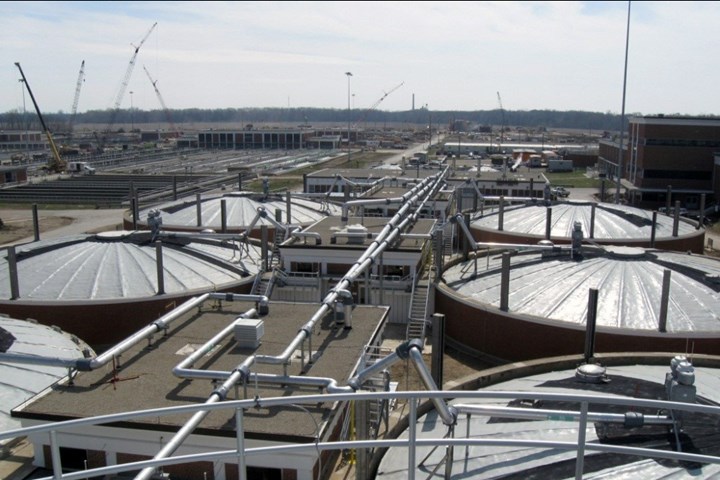Brown and Caldwell Helps Improve Acid Phase Digestion System
The project at Columbus, Ohio’s Southerly Wastewater Treatment Plant will rehabilitate acid phase digesters and other aging ancillary equipment to create an acid phase digestion system with capacity-enhancing, financial benefits.
The City of Columbus, Ohio has engaged Brown and Caldwell to deliver professional design services for a new and improved acid phase digestion system at its Southerly Wastewater Treatment Plant (SWWTP).
The SWWTP is said to be one of the largest facilities of its kind in the country, situated on 288 acres and serving over 530,000 residents. With an average flow of 120 million gallons per day, its two-phase digestion process consists of two sludge storage silos, six methane phase digesters and three acid phase digesters (APDs) to produce a Class B biosolids product for land application and other uses.
The project, “SWWTP Digester Process Expansion – Phase II,” will rehabilitate the APDs and other aging ancillary equipment to create an acid phase digestion system with capacity-enhancing, financial benefits.
Brown and Caldwell says the project is an opportunity to plan and evaluate innovative digester processes, including Acid+ digestion, an innovative project with the Water Research Foundation. Acid+ reportedly has the potential to revolutionize wastewater treatment by reducing operations and maintenance expenses, yielding higher quality biosolids (Class A) and biogas products and achieving cost-effective nutrient recovery with simple retrofits to existing equipment.
In addition, a phosphorous recovery study will evaluate options to produce high-quality, low phosphorus biosolids for agricultural use while addressing future nutrient load increases in line with national permit limits. Considerations will be included to identify, restrict or possibly destroy emerging contaminants loading in downstream biosolids before reuse.
Furthermore, an addition part of the project will be an investigation into the creation of a fats, oils and greases receiving station and feasibility analysis of co-digestion to supercharge biogas production and create an alternative revenue stream. This includes an assessment on availability and providers of organic waste in the central Ohio region and any digestion system improvements required to incorporate co-digestion for beneficial reuse.
The Brown and Caldwell team will provide preliminary design, detailed design and engineering services during construction. In addition to undertaking condition assessments and feasibility studies, the team will prepare construction cost estimates, develop bid documentation and help evaluate qualified firms.
With Acid+ digestion research and preliminary design recently underway, detailed design is scheduled for completion by the end of 2022, paving the way for the construction phase.
Related Content
-
Ultrafiltration Membranes, Filter Elements for Improved Industrial Water Reuse
Ultrafiltration membranes help with water reuse in a variety of applications.
-
NASF/AESF Foundation Research Project #122: Electrochemical Approaches to Treatment of PFAS in Plating Wastewater - 12th Quarterly Report
This NASF-AESF Foundation research project report covers the 12th quarter of project work (October – December 2023) at the University of Georgia. In our previous report, we described our work on performance and effect of surface fluorinated Ti4O7 anodes on PFAS degradation in reactive electrochemical membrane (REM) mode. This quarter, our experiments involved utilizing porous Ti4O7 plates serving both as anodes and membranes. Tests compared pristine and F-18.6 Ti4O7 anodes at current densities of 10 mA/cm2 and 40 mA/cm2. This 12th quarterly report discusses the mechanisms of the effects on EO performance by anode surface fluorination.
-
NASF/AESF Foundation Research Project #120: Electrochemical Destruction of Perfluorooctanesulfonate in Electroplating Wastewaters - April 2022-March 2023
This NASF-AESF Foundation research project report covers project work from April 2022 to March 2023 at the University of Illinois at Chicago. The overall objective of this work is to utilize a cost-effective reactive electrochemical membrane (REM) for the removal of PFAS from synthetic electroplating wastewater. Initial results for the oxidation of PFOA with three different catalysts are discussed.

















